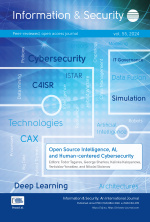Money Laundering Techniques with Electronic Payment Systems
Source:
Information & Security: An International Journal,Abstract:
In case of terrorist actions, the main emphasis lies on the security aspect. Nevertheless, the financial aspect, as for example the collection, transfer and withdrawal of money from the payer to the payee plays an equally important role for preparation of terrorist actions. Besides, the techniques of money laundering are often used to conceal or disguise the origin, nature, source, location, disposition or ownership of assets financing terrorist actions. The Financial Action Task Force (FATF) organization has identified many activities and typologies used for money laundering or terrorist financing, e.g. with shell companies and nominee, through unofficial money transfer systems, “smurfing” practices (through dividing of large payment sums into multiple deposits under the threshold value), transfers, money smuggling, etc. Many of these activities are carried out by means of electronic payment systems, which transfer the monetary values over telecommunication net-works. Customer instruments such as Internet software (electronic purse), smart cards, mobile devices, debit and credit cards could be applied as payment instruments. The suitability of an electronic payment system for financing of illegal activities depends to a great extent on such supported characteristics as anonymity, mobility, etc. It can be furthermore assumed that payment systems differ with regard to their suitability for a single money laundering phase (and thereby for terrorist financing). The multi-process character of money laundering is typical for terrorist financing and often contains a series of transactions from collection of money to money withdrawal in order to conceal the origin, nature or disposition of money.
